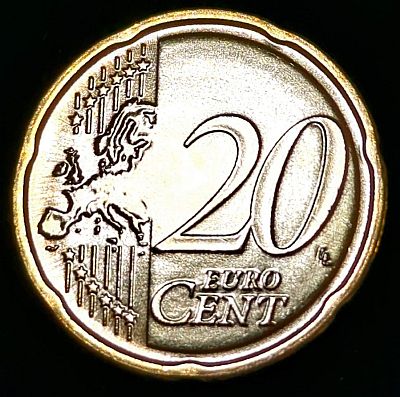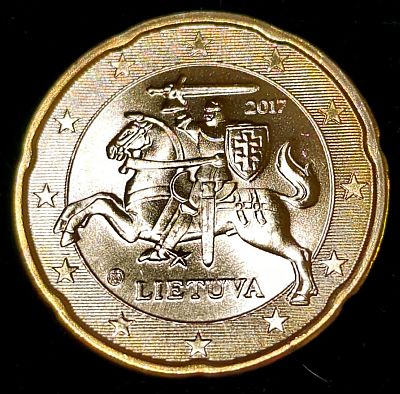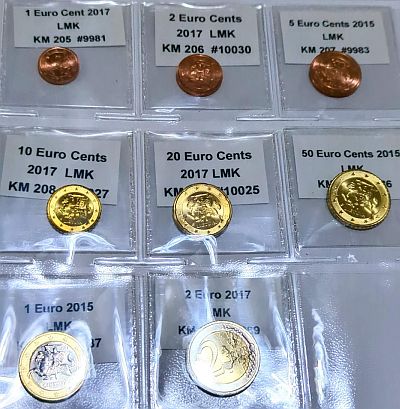A powerful heraldic design on a modern currency

Lithuania
The Republic of Lithuania is country on the Baltic Sea, which also includes, Sweden, Finland, Russia, Estonia, Latvia, Poland, Germany and Denmark. Estonia, Latvia and Lithuania specifically are known as the “Baltic States“.
The Kingdom of Lithuania was formed in 1253 when King Mindaugas, son of a powerful regional ruler, united the various tribes of the region into one kingdom. Lithuania is 65,300 Km2 (25,212 mi2), which ranks 124th by area. That is smaller than each of the largest 40 US states. The population is roughly 2.8 million.
The Euro €
Lithuania is a member of the European Union, a group of 27 countries in Europe who have joined together in a number of ways. Notably for numismatists, 20 of the EU countries use the “Euro” as their currency. These countries are:
- Austria
- Belgium
- Croatia
- Cyprus
- Estonia
- Finland
- France
- Germany
- Greece
- Ireland
- Italy
- Latvia
- Lithuania
- Luxembourg
- Malta
- the Netherlands
- Portugal
- Slovakia
- Slovenia
- Spain
The symbol of the Euro is €.
The name “the euro” was chosen in 1995 by a European Council meeting in Madrid.
The symbol € is based on the Greek letter epsilon (Є), with the first letter in the word “Europe” and with 2 parallel lines signifying stability.
The ISO code for the euro is EUR. This is used when referring to euro amounts without using the symbol.
Reverse
Euro coins are consistent in size, material and reverse design, depicting a map of the European Union, with the denomination. The design was created by Luc Luycx of the Royal Belgium Mint.
I specifically chose the 20 Euro cents for two reasons: its metal, and its shape. Firstly, it is made, not of brass or bronze, as the colour might suggest. It is made of the much more mythical sounding “Nordic Gold“. Nordic Gold is an alloy made of 89% copper, 5% aluminum, 5% zinc, and 1% tin. The name came from the Royal Swedish Academy of Engineering Sciences, who patented it. Nice marketing touch there!
The other reason I chose this coin is the shape. Rather than simply being “round”, Numista list the coin as being a “Spanish Flower“. From that page (which actually quotes Wikipedia): “The Spanish flower is a type of coin flan shape. It consists of a smooth edge separated into equal sections by a number of indents. At least two coin issuers, the European Union and Fiji, have mentioned explicitly that the Spanish flower shape was chosen to help the visually-impaired.” The WorldOfCoins link includes pictures of the original Spanish 50 Peseta which uses the shape.
Obverse

Each country can is free to design the reverse side of their coins. Some use different designs on each denomination. Some, like Lithuania, use a consistent design. The design on Lithuania’s coins is Vytis, which is also the national coat of arms. Vytis is an armoured knight on horseback, holding a sword above his head. A shield with a double cross sits on his left arm. Similar to the Cross of Lorraine, the double cross was first depicted on a knight’s shield in 1386.
The design is featured on each of the regular Lithuanian Euro coins:



Leave a Reply